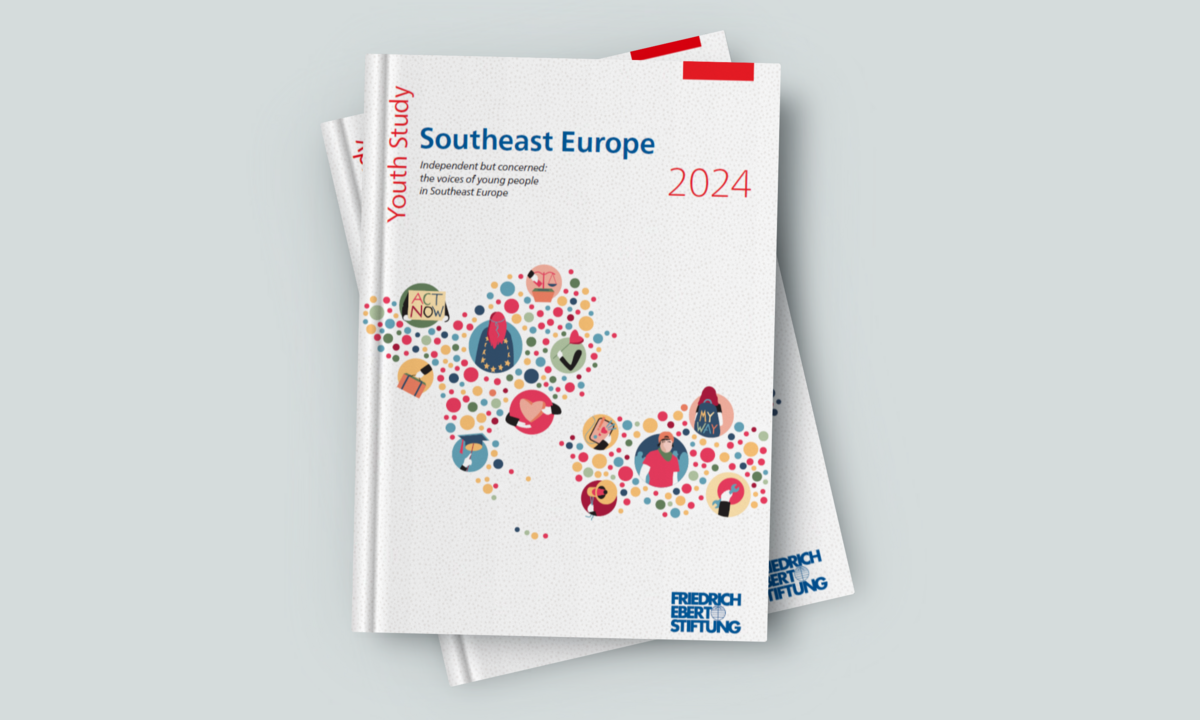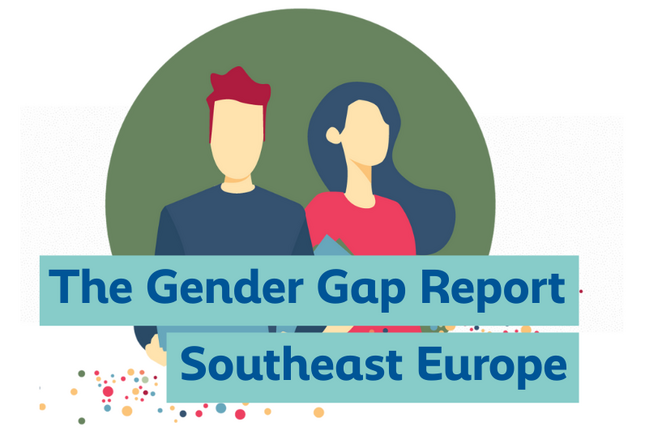
The Gender Gap Report Part VI: Gender Attitudes in North Macedonia
Young Women Consistently More Progressive, But Small Sample Limits Statistical Proof
In North Macedonia, young women consistently express more progressive attitudes than young men on gender equality and related issues—but small sample sizes mean we can only statistically prove this pattern in one case. The Friedrich-Ebert-Stiftung's Southeast Europe Youth Study 2024 reveals that young women show higher support than men for the Law on Gender Equality (67.6% versus 59.7%), same-sex marriage rights, and rejecting male job priority, with similar-sized gender gaps ranging from 6 to 8 percentage points. Yet only the gap on rejecting male political superiority—at 15 percentage points—is large enough to achieve statistical significance given the sample of 504 respondents.
This sixth installment in our Gender Gap series confronts a methodological reality: consistent patterns do not always equal statistical proof. The data suggest meaningful gender differences in progressive attitudes, but we must be honest about what we can and cannot conclude with confidence from a youth survey of this size.
The Main Finding: Consistent Gaps, Limited Statistical Proof
Among North Macedonia's youth aged 14-29, support for the Law on Gender Equality shows a notable gender pattern: 59.7% of young men and 67.6% of young women back the legislation—a gap of 7.9 percentage points. However, statistical testing reveals this difference is not statistically significant (p = 0.13), meaning we cannot rule out that it resulted from sampling variation rather than reflecting a true underlying difference.
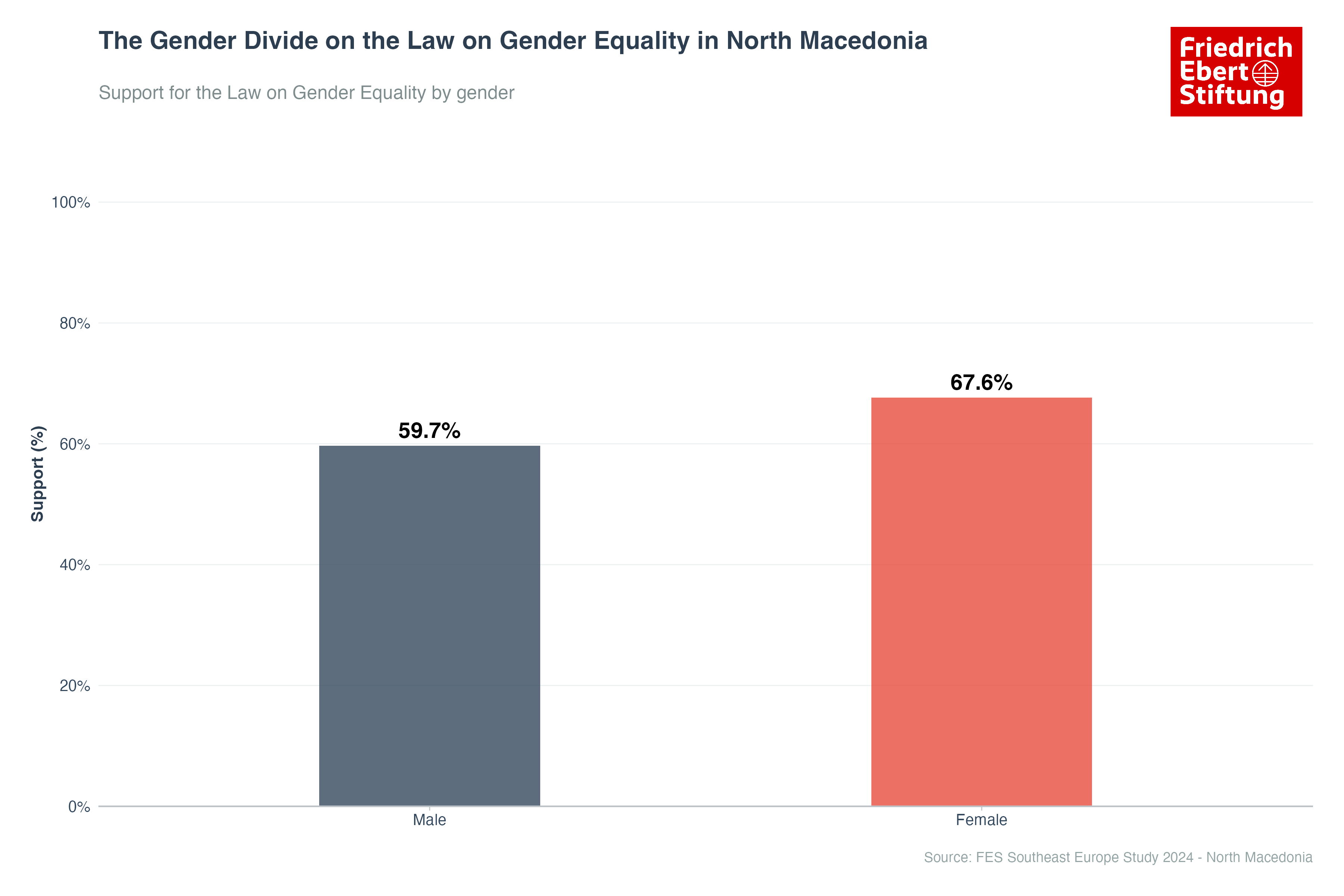
The 7.9-percentage-point gap is substantial in size—larger than the gaps on same-sex marriage (6.4 points) or job priority for men (6.8 points). The problem is not that the gap is small, but that our sample size is too limited to distinguish this pattern from statistical noise with conventional levels of confidence.
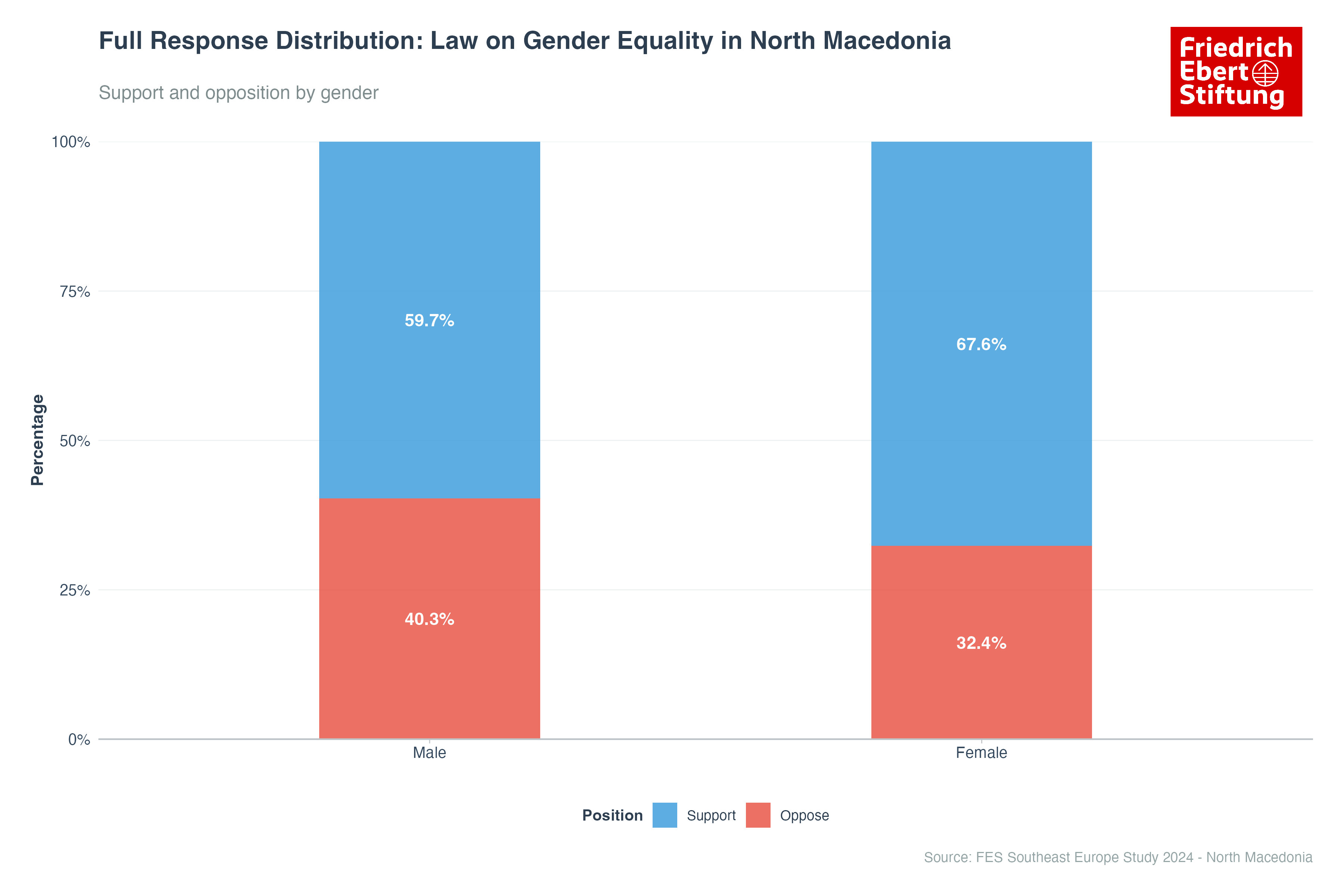
What we can say: majorities of both genders express support for the law, with women showing consistently higher rates. What we cannot say with statistical confidence: that this 7.9-point difference represents a true population-level gap rather than sampling variation.
The Pattern Across Gender Equality and Related Attitudes
The story becomes clearer when we examine gender gaps across multiple issues related to gender equality and progressive values. Young women consistently show more progressive attitudes than young men across five different measures, with gaps ranging from 4 to 15 percentage points.
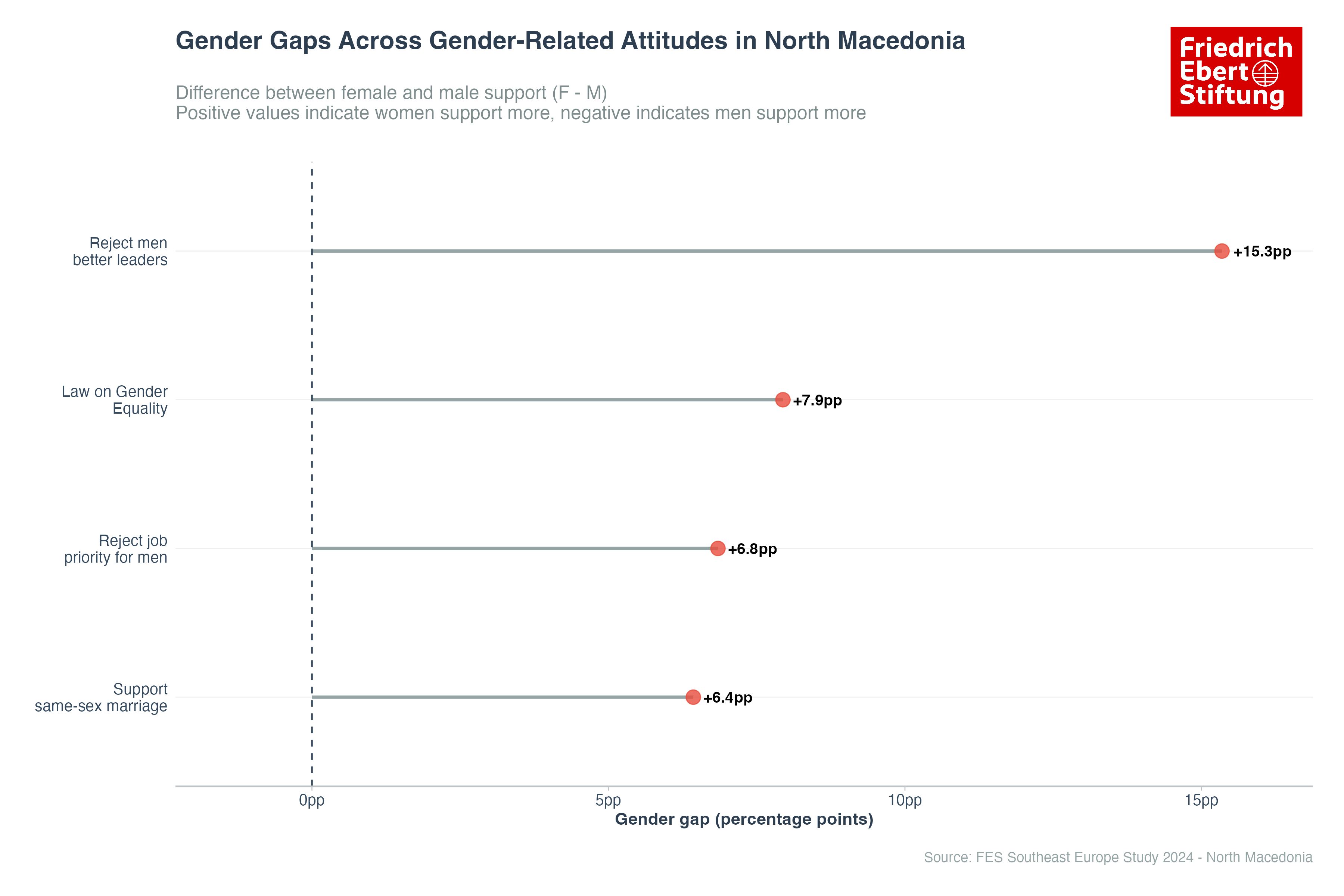
The gender gaps are consistent in size (6-8 percentage points) across four of five measures. They all point in the same direction—women more progressive than men. But only two reach statistical significance, and that is primarily because the sample becomes small when divided by gender and filtered for those with opinions on each issue.
The one exception—rejecting male political superiority—shows a much larger gap (15 points), large enough to achieve significance even with limited sample sizes. This suggests that beliefs about male leadership may be where gender differences are most pronounced, but the consistent smaller gaps on other issues hint at a broader pattern that our sample size simply cannot confirm with statistical confidence.
Descriptive Patterns: Ideology, EU Support, and Context
Beyond the overall gender patterns, the data reveal how support for gender equality legislation varies across different groups—though again, small sample sizes mean most of these patterns should be interpreted as descriptive observations rather than statistically confirmed differences.
Political Ideology Shows Unexpected Patterns
Political orientation reveals surprising patterns in gender equality support. Centrist youth show the highest support: 82% of centrist women and 71% of centrist men back the law. Right-wing women show the lowest support at 42%, while right-wing men are at 52%. Unexpectedly, left-wing men show only 45% support—lower than both centrist and right-wing men—while left-wing women are at 65%.

Within each ideological group, gender differences exist but do not reach statistical significance—likely because sample sizes become very small (37-80 respondents per subgroup) when divided by both gender and ideology. What we can observe descriptively is that being centrist appears most strongly associated with support, regardless of gender, while both left-wing and right-wing orientations show more variable and generally lower support levels.
EU Support Shows Complex Patterns
Among those who support EU membership, 81.2% of young men and 73.8% of young women back the Law on Gender Equality—a pattern where pro-EU men actually show descriptively higher support than pro-EU women, though this difference is not statistically significant (p = 0.19).

Among EU skeptics, the pattern reverses: women maintain 57% support while men drop to 43.8%, though again this difference does not reach significance (p = 0.31). The particularly small samples of EU opponents (fewer than 100 per gender) mean these patterns are highly uncertain.
Geographic and Religious Context
Urban and rural residence shows relatively little association with gender gaps in law support. Urban women descriptively show higher support (70.8%) than urban men (58.1%), while rural patterns show women at 63.2% and men at 62.1%. Neither gender difference reaches statistical significance.
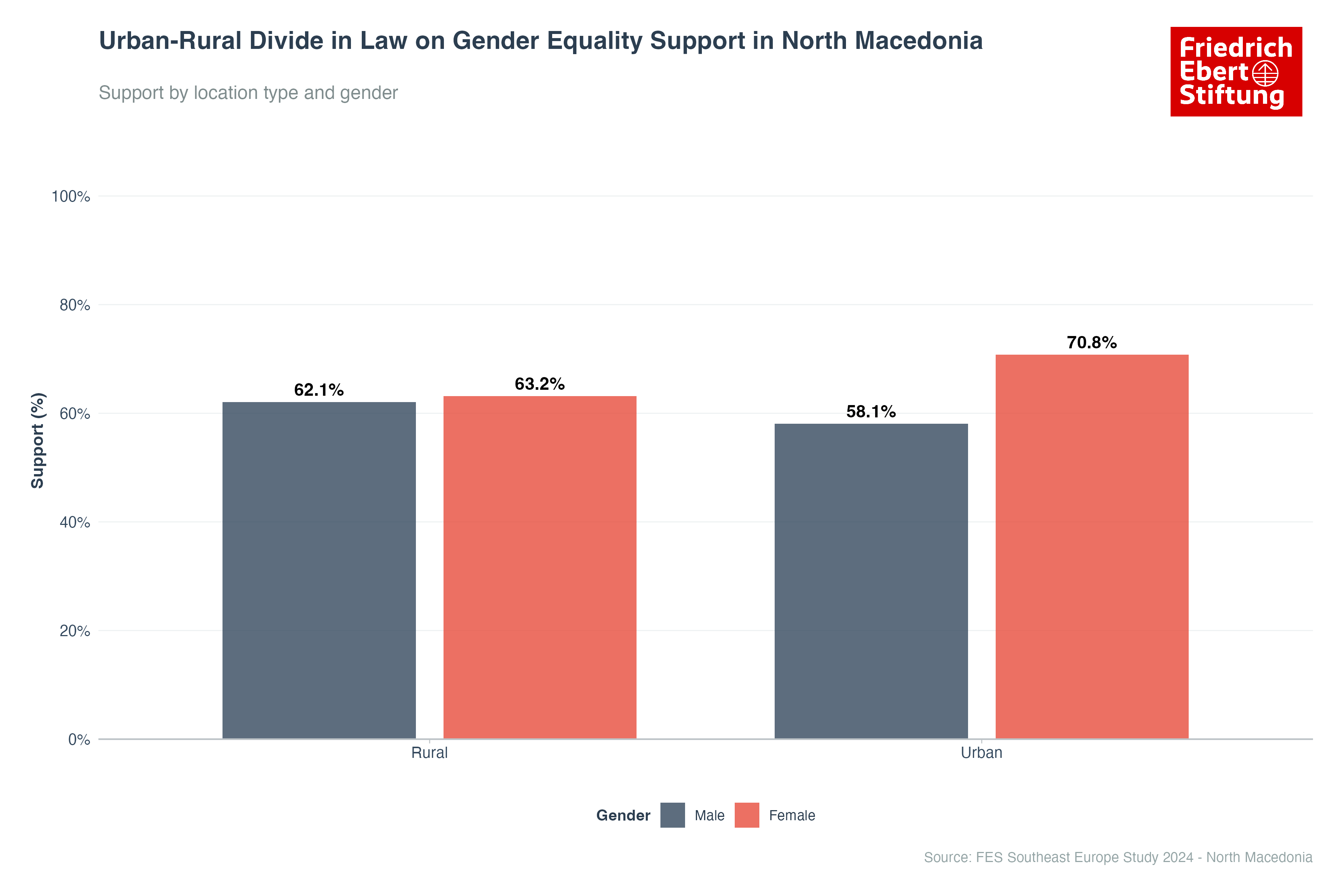
Religious service attendance shows different patterns by gender. Among women, support declines linearly with increasing religious attendance (76.7% never/rarely, 63.8% occasional, 59.2% regular). Men show a different pattern, with support dipping among occasional attendees (64.6% never/rarely, 56.4% occasional) before recovering among regular attendees (61.8%). However, none of these gender differences within religiosity categories reach statistical significance. Our sample sizes are likely too small to detect it.
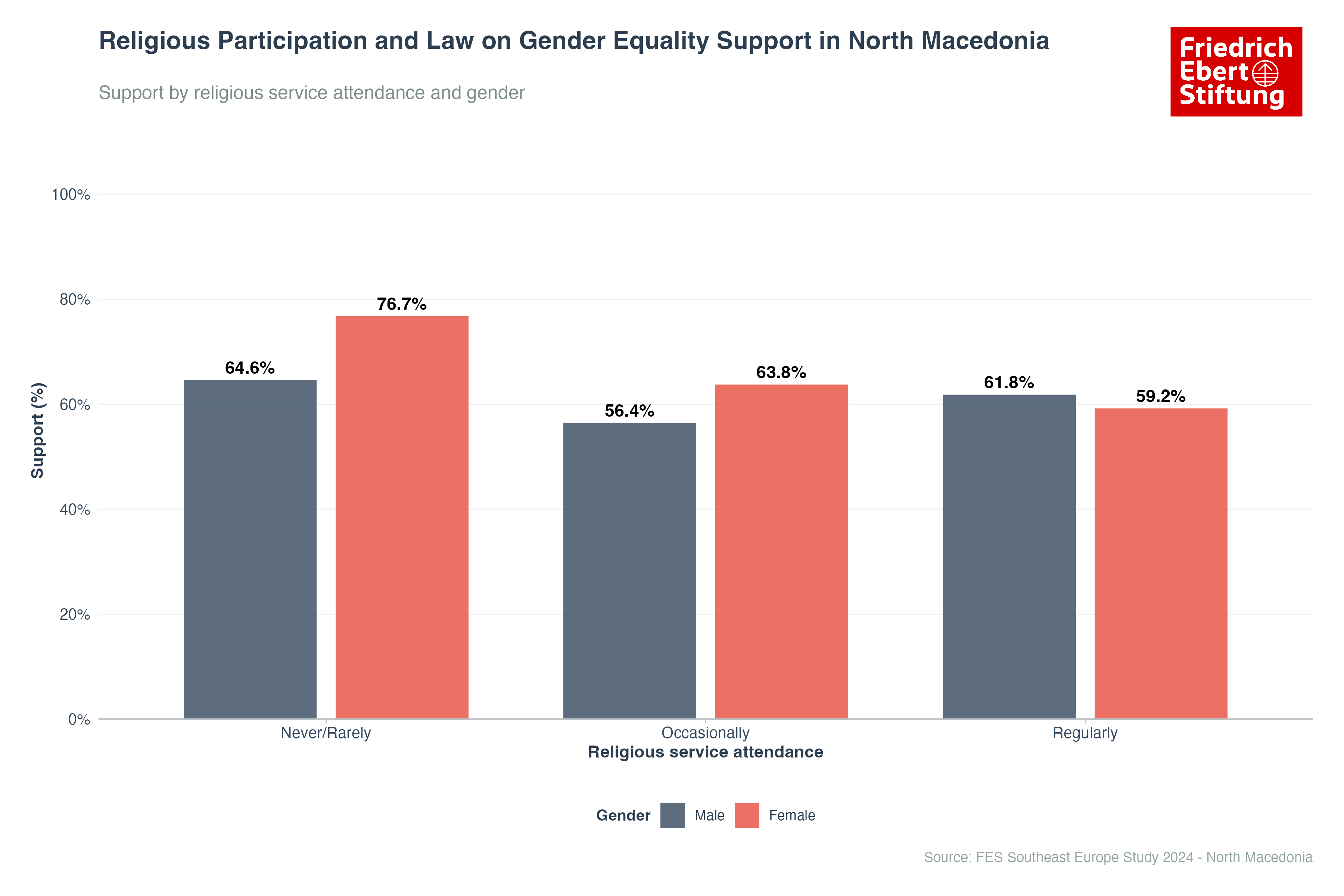
What This Tells Us About Gender and Progressive Attitudes
The findings from North Macedonia reveal several important insights about gender attitudes among youth, along with honest acknowledgment of what we cannot conclude:
First, young women consistently express more progressive attitudes than young men on gender equality and related issues. Whether on gender equality legislation, same-sex marriage, employment rights, or political leadership, women show higher progressive support by 6-8 percentage points in most cases, and 15 points on rejecting male political superiority. This consistency across measures suggests a real pattern, even though we can only statistically confirm it in one case.
Second, sample size fundamentally limits what we can prove. With 369 respondents expressing opinions on the gender equality law—divided by gender and further subdivided when examining ideological, geographic, or religious differences—our ability to detect statistically significant differences is severely constrained. An 8-percentage-point gap that would be highly significant in a sample of 1,000 respondents appears non-significant in a sample of 369. This does not mean the gap is not real; it means we cannot rule out sampling variation as an explanation.
Implications for Gender Equality Advocacy
Despite the statistical limitations, these findings offer several practical insights for those working to advance gender equality in North Macedonia:
Build on existing male support. With nearly 60% of young men supporting the Law on Gender Equality, there is a substantial base to build on. The challenge is converting ambivalence into active backing rather than overcoming outright opposition. Advocacy should avoid framing this as men versus women and instead emphasize how gender equality benefits everyone.
Link gender equality to broader progressive values. The clustering of attitudes suggests that gender equality should be presented as part of a comprehensive progressive agenda—connected to human rights, social equality, and pluralism. Isolating it as a "women's issue" may be less effective than showing how it fits into broader equality and modernization efforts.
Leverage EU integration framing strategically. While the patterns are not statistically significant, the descriptive data suggest that pro-European youth show higher support for gender equality across both genders. Presenting gender equality as part of European integration and modernization may help mobilize support, particularly among men who might otherwise be ambivalent.
Build coalitions across political lines. The fact that centrist youth show high support suggests potential to build broad coalitions beyond traditional left-wing bases. Framing gender equality as pragmatic policy rather than ideological confrontation may expand the coalition of supporters.
Address foundational beliefs about male leadership and employment. The clearest gender gap appears in beliefs about male political superiority. While legislation can mandate equal treatment, shifting these deeper attitudes requires longer-term educational and cultural efforts. Advocacy should work on both fronts: pushing for legal protections while also challenging underlying beliefs about gender and power.
Conclusion: What We Can and Cannot Conclude
This analysis related to the Law on Gender Equality draws from 369 young people aged 14-29 in North Macedonia who expressed opinions about it (from a total sample of 504 with valid gender data). This sample size allows us to detect large effects but severely limits our ability to identify moderate-sized differences, especially within subgroups.
Statistical significance testing reveals that only two findings meet conventional thresholds (p < 0.05):
- Gender differences in rejecting male political superiority (p < 0.001, highly significant)
- Gender differences in rejecting male employment priority (p = 0.03, significant)
The overall gender gap in Law on Gender Equality support (7.9 percentage points), along with gaps on same-sex marriage (6.4 points) and EU support (4.0 points), did not reach statistical significance. Most subgroup patterns by ideology, EU stance, urban residence, and religious participation also failed to reach significance.
This does not mean these patterns are meaningless. It means that with our sample size, we cannot distinguish these observed differences from sampling variation with conventional levels of confidence (95%). The consistent direction of gender gaps across multiple measures—women more progressive in every case—suggests these patterns may be real, but we cannot prove it statistically.
About the Data
This analysis draws from the Friedrich-Ebert-Stiftung's North Macedonia study which was part of a larger Southeast Europe Youth Study 2024 conducted in 12 countries. Statistical significance testing used survey-weighted chi-square tests and t-tests with a conventional threshold of p < 0.05.
Related publication
Youth Study Southeast Europe 2024
Vienna, 2024
Download publication (7 MB, PDF-File)

